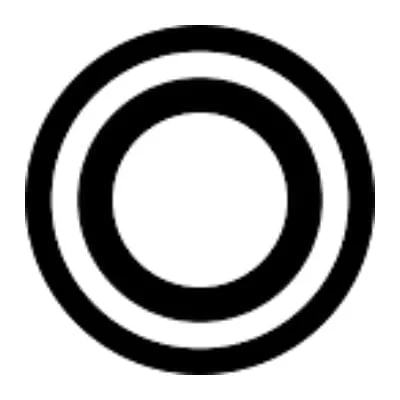Ordinal NFTs: Bitcoin’s Native NFT Revolution
Ordinal NFTs represent a groundbreaking way to create NFTs on Bitcoin, leveraging the Bitcoin network itself rather than relying on separate layers or blockchains. Created by developer Casey Rodarmor, the Ordinals protocol, launched on January 20, 2023, enables Bitcoin users to attach digital artifacts—such as images, videos, and other data—directly to individual satoshis (the smallest unit of Bitcoin).
This innovation is significant because Ordinal NFTs are fully Bitcoin-native. They work directly on the Bitcoin blockchain, without requiring any changes to Bitcoin’s protocol or additional layers like Layer 2 solutions (e.g., Ethereum or sidechains). This makes Ordinals unique in the world of NFTs and positions them as a game-changer for Bitcoin users.
What Are Ordinals?
At the core, Ordinals are a numbering scheme for satoshis—the smallest divisible units of Bitcoin. Each satoshi is given a unique ordinal number based on the order in which it was mined. These ordinal numbers are used to track and transfer individual satoshis across the network, allowing users to inscribe arbitrary data onto these satoshis, effectively turning them into NFTs.
Key Features of Ordinals:
- Bitcoin-native NFTs: Ordinal NFTs are created directly on the Bitcoin blockchain, without any need for additional layers or sidechains.
- No Protocol Changes: Unlike other NFT solutions, Ordinals don’t require changes to Bitcoin’s protocol. They operate using Bitcoin’s existing structure, making them backward compatible and future-proof.
- Data Attachment: Using ordinal numbers, users can attach assets like images, text, videos, and more directly to individual satoshis. This can turn a satoshi into a unique digital artifact or NFT.
- Open Source: The Ordinal project is open-source and available on GitHub, with detailed documentation (BIP – Bitcoin Improvement Proposal) outlining the ordinal scheme.
How Ordinals Work: The Numbering Scheme
The essence of Ordinals lies in the ordinal numbers, which provide a systematic way to track and transfer satoshis across the Bitcoin network. These numbers represent the order in which satoshis are mined and transferred.
- Satoshi Numbering: Each satoshi is numbered based on the order in which it was mined. This means that every satoshi has a unique ordinal identifier. These numbers serve as stable identifiers for individual satoshis, making it easy to associate them with data like NFTs.
- Transfer Mechanism: The transfer of ordinals relies on transaction inputs and outputs (the order in which they appear). Satoshis are transferred first-in-first-out based on this transfer order.
- Inscriptions: Using the ordinal numbers as unique identifiers, digital assets (NFTs, media files, or tokens) can be “inscribed” onto specific satoshis, turning them into unique collectibles that are fully integrated with the Bitcoin network.
Representations of Ordinal Numbers:
Ordinal numbers can be expressed in various formats:
- Integer Notation:
- Example:
2099994106992659 - This is the ordinal number assigned according to the order the satoshi was mined.
- Example:
- Decimal Notation:
- Example:
3891094.16797 - The first number is the block height in which the satoshi was mined, and the second is the offset of the satoshi within that block.
- Example:
- Degree Notation:
- Example:
3°111094′214″16797‴ - A more intricate method of representing the ordinal, with precise details.
- Example:
- Percentile Notation:
- Example:
99.99971949060254% - This shows the percentage position of the satoshi within Bitcoin’s total supply.
- Example:
- Name Notation (Satoshi):
- Ordinals can also be encoded using letters of the alphabet, such as a-z, as another way of identifying satoshis.
Inscribing Data on Satoshis
By utilizing ordinal numbers, users can inscribe data directly onto individual satoshis, making them unique and tradeable as NFTs. The process of inscribing involves embedding data (like images, text, or videos) onto the satoshi, which is then tracked and transferred using the ordinal number.
These digital artifacts (inscriptions) can then be used in NFT marketplaces, DeFi protocols, and digital collectibles, providing a new way to bring Bitcoin’s security and decentralization into the growing NFT ecosystem.
Why Ordinals Are Important
- Bitcoin’s NFT Future: Ordinals bring NFTs to Bitcoin, which has long been considered the gold standard in cryptocurrency. Unlike Ethereum or Solana, Bitcoin lacks native support for NFTs. Ordinals provide a solution that aligns with Bitcoin’s decentralized and secure nature.
- Backward Compatibility: Ordinals do not require changes to Bitcoin’s core protocol, making them fully compatible with the Bitcoin network and easy to implement without disrupting existing operations.
- No Additional Layer or Token: Ordinals are purely Bitcoin-based and do not require a separate token or blockchain, meaning they inherit all the security and reliability of Bitcoin.
Technical Details and Tools
The Ordinal project is available on GitHub as an open-source initiative. The project includes several components for interacting with Bitcoin through Ordinals, including:
- Ordinal Index: Tracks the location of all satoshis and enables easy access to their ordinal numbers.
- Ordinal Wallet: A wallet that allows users to send and receive ordinal-aware transactions, managing their NFT sats.
- Block Explorer: An interactive explorer that lets users browse the blockchain and view details of inscribed ordinals.
- Inscription Tools: Allows users to inscribe satoshis with digital artifacts and turn them into NFTs.
Ordinal NFTs are revolutionizing the way NFTs are created and interacted with on the Bitcoin network. By enabling users to attach digital data directly to satoshis, Ordinals create a Bitcoin-native NFT experience that is secure, scalable, and fully integrated with the Bitcoin blockchain. As the ecosystem around Ordinals grows, it could have a transformative effect on both the Bitcoin network and the broader NFT landscape.




















Harran –
nice
JIGODIA –
Good !